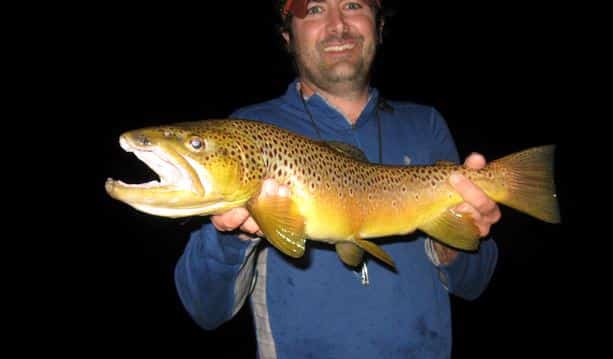This post was last updated on November 15th, 2014 at 05:31 pm
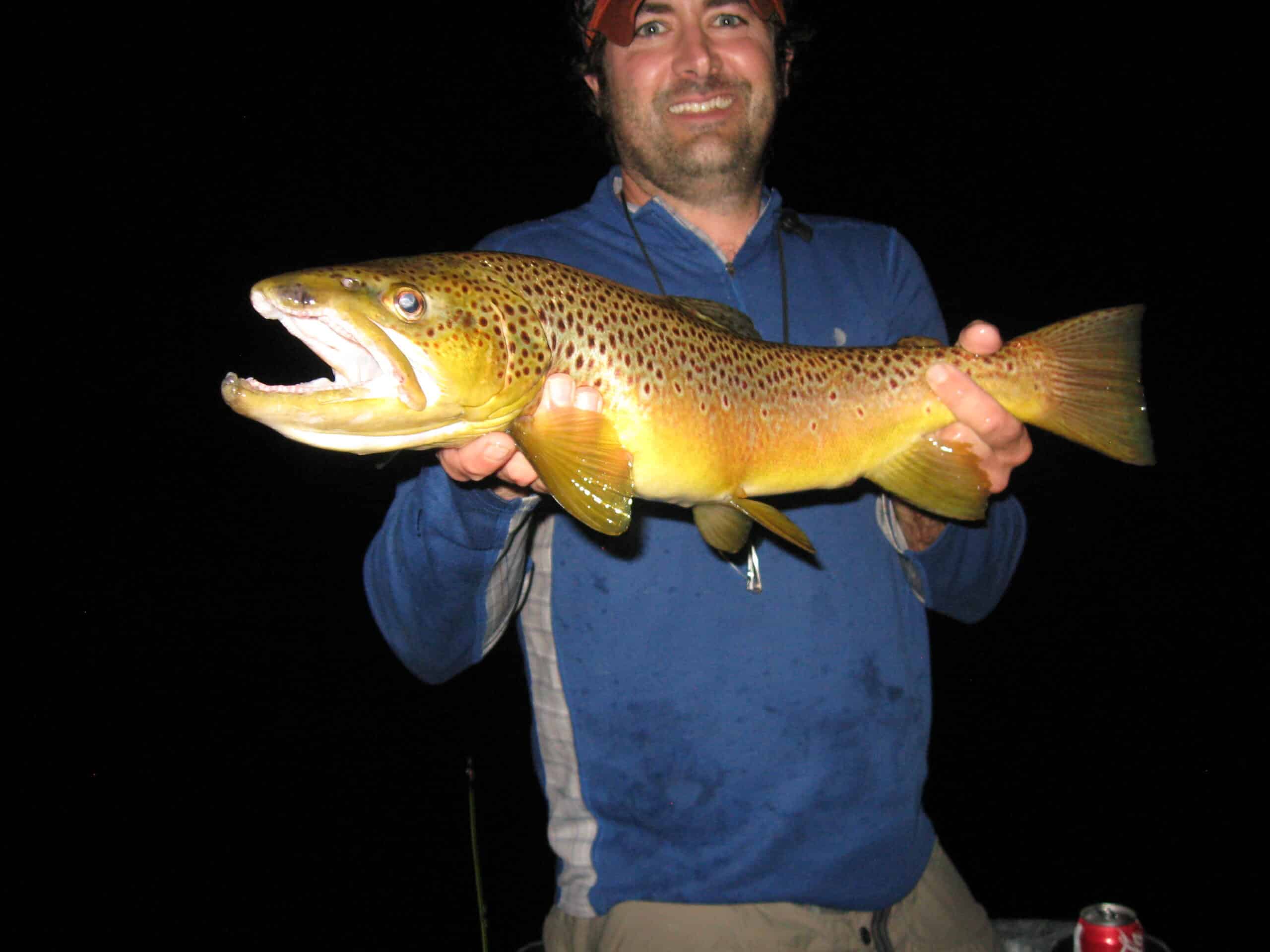
Fishing the Hexagenia or Hex hatch After Dark
If you have never been on a river all night long fishing during the Hexagenia limbata (hex) hatch, you have no idea what you have been missing your entire life. The Hexagenia or hex for short, is a large mayfly that has a spinner fall after dark. I usually arrive to the river a couple hours before dark to get some casual daytime fishing in before the excitement starts. The hex will be resting in the trees at that point, awaiting natures signal to breed that will come shortly after the sun goes down.
The hex hatch really is among my top all time favorite things to do in the spring/early summer. Right about when the sun goes down you will see one or two flying around looking to mate. But it is usually well after dark before things get interesting. Prepare yourself for the most exciting night fishing experience of your life!
 What happens.. Why does this “hex” create such an exciting event?
What happens.. Why does this “hex” create such an exciting event?
The hex is an extremely large mayfly and a large meal for trout with each gratifying gulp. (See hex fly patterns) The size of these flies, coupled with the quantity is what triggers the largest fish in the river to feed with reckless abandonment. Nearly every fish in the river will be partaking in a mass feeding event, whether they are HUGE brown trout or just the little guys.
The flies will begin to show themselves in abundance when you least expect it. Almost every really great night I have had fishing during the hexagenia spinner fall, I had just about given up on it happening. If conditions aren’t right they will retreat to the trees and put off the breeding for another day. This will leave you with a long drive home and nothing to show for it but one less tank of gas.
The flies will start to accumulate above the river in huge quantities. You can see and often times hear them up there flying about. On many occasions I have seen hex spinner falls so dense; that their wings were hitting other hex flies and it sounded like power lines above buzzing with electricity. The flies will begin to breed and lay eggs on the surface of the water. Once the hexagenia breeds it will die on the water to become fish food. Frequently these flies will gather dead in piles so huge you can pick them up by the handfuls.
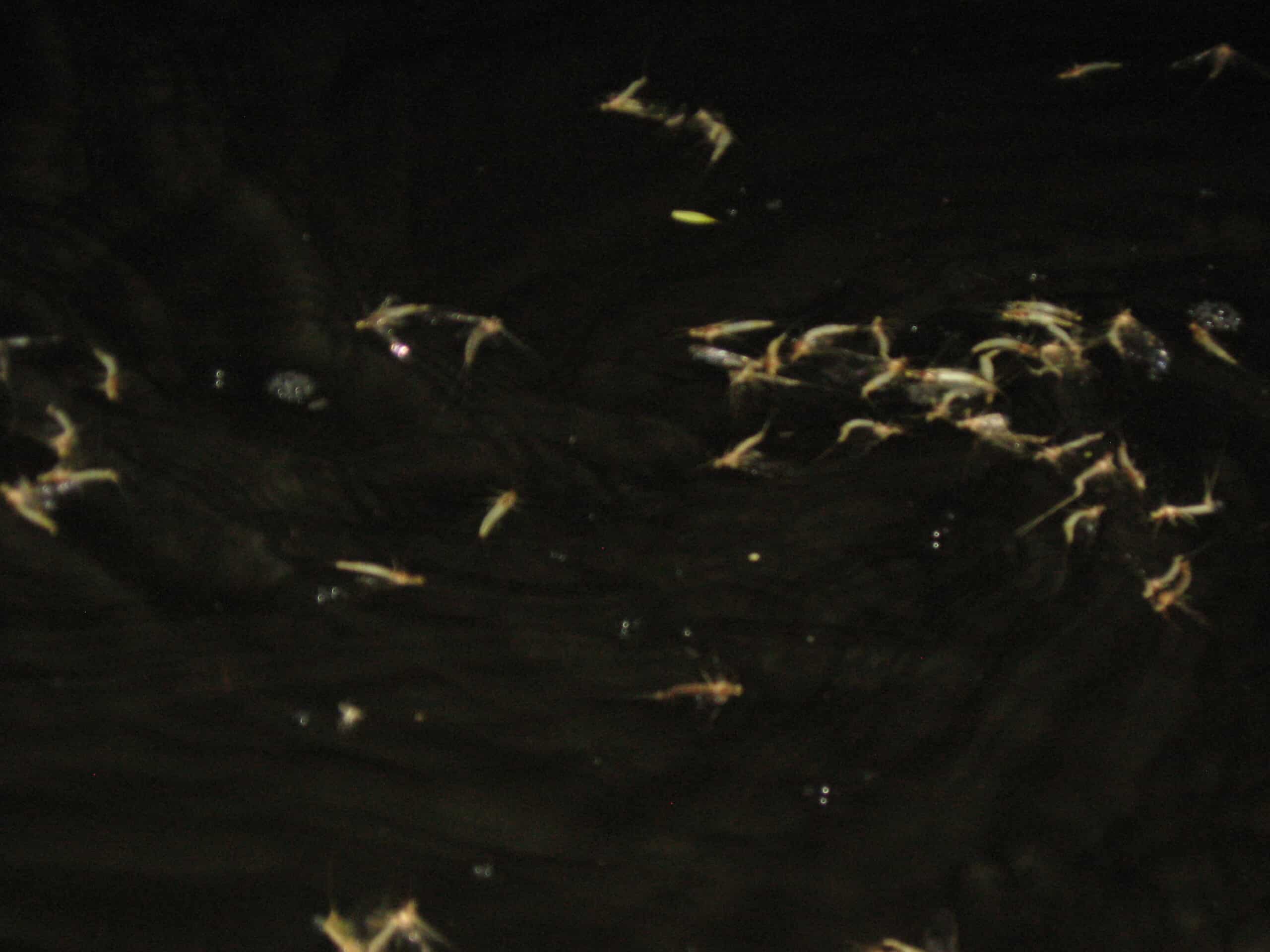
Tips to ensure you of a successful night during the Hex hatch spinner fall
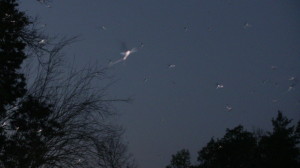
Before the flies arrive you will need to position yourself in an area that you know there are large fish present. Generally I will be located in an area with really deep water and a lot of log jams present. This is the area where the largest brown trout usually reside. The Hexagenia Limbata nymphs thrive in the swampy muck that accumulates from years of decomposing sediment. (you know, the stuff that you walk in and loose your shoe in it). They burrow deep into this material. Areas with large quantities of “muck” will have healthy populations of the hex fly. Once you have chosen an area where you feel there will be large fish you should wait patiently for the fish to feed. Chances are good that the first fish to begin feeding in the area will be smaller ones. Try not to risk scaring the “big mommacita” brown trout by fishing for these small ones. Wait until you hear what sounds like a big fish feeding. You will know when its a large fish by the resounding thud it makes when it closes its mouth. Many times the largest fish will make very little if any sound at all.
Identifying the fish you want
There might be a few large fish feeding in the immediate area. In order to
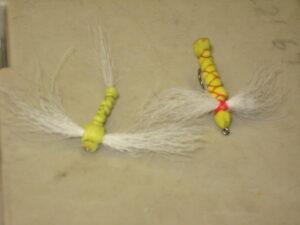
catch the largest fish you will have to figure out exactly where this fish is. (Remember this is all taking place in the middle of the night, possibly without even moon light). If there is moon light you might be able to find a good angle and see the fish hit a time or two. Chances are the trout is not going to move much from this spot. If you have Identified a magnum brown trout then you are ready to plan your attack. There will be a lot of flies on the water that are competing with your fake fly. You will need to keep this in mind and be patient to get the fish. It might not eat your fly the first, second, or even hundredth cast. But with consistent placement in the feeding line he will eventually eat it. (unless you are being sloppy and landing on top of it). I have found that by using a fly that is larger than a natural hex pattern will often increase the likely hood that it will get eaten. Anything that will make the fish key in on your fly, over the hundreds of others will potentially encourage a strike.
Proper equipment and tactics for successful night fishing for large trout
-
Using the proper sized line:
Make sure you go into the hex battle prepared for war. Don’t use 5x tippet! You will need at least 12lb test line. These fish will not be line shy most likely. You need to have enough strength in the line to control them and keep them out of log jams.
-
Bring a rod made to control large fish:
Try to use a rod that is capable of man handling a large brown trout. This is not the place to use your bamboo fly rod. You will need a rod with some backbone capable of turning a large fish. If you hook a big fish and it makes a bull run for a log jam, it will be game over if he gets there. You will have to stop him! Sure if you pull like heck you might break the line, but I promise you the line will be broken if that fish gets into a logjam.
-
Be careful where you cast and don’t scare the fish:
It is extremely important to make sure that as you are casting to what might be the brown trout of your lifetime not to land on top of it. And DO NOT PULL YOUR FLY OUT OF THE WATER WHEN IT IS ON TOP OF THE FISH! That’s the best way I know of to put down big fish. I know I have said that at least a couple other times on this website, but it really is an important thing to always remember. Let your fly float way past the fish before you pull out to recast. One more tip is to pull your fly out of the water slowly to prevent that huge popping noise that happens on occasion with larger flies. This usually occurs when there is slack in the line and you abruptly extract it from the water. If you start off with a slow steady lift and then proceed with your back cast this popping noise can be easily prevented.
Following these strategies you should be able to catch the trout of your dreams during the hexagenia or Hex hatch/spinnerfall

